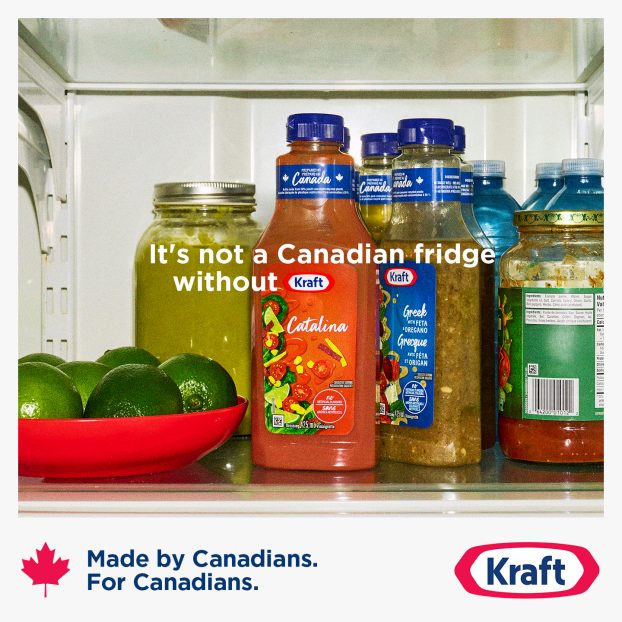The future of successful sponsorship is here – gone are the days when major blue chip corporations sought opportunities to strengthen brand awareness across every imaginable category. With a ‘less is more’ attitude, the majority of Canadian corporations are securing partnerships with as little as one to four large properties that offer greater association to the brand essence and ultimately drive elements of the marketing strategy.
Brands need to carve their own niche
Avoid trying to be all things to all people: successful sponsorships should be established through a limited number of relationships that can ultimately connect with and strengthen the brand. A focused message delivered through the right media channels is what breaks through the clutter.
Esso, for example, has only one sponsorship niche in Canada – hockey. Through established relationships with Wayne Gretzky, as well as the Hockey Hall of Fame and the Canadian Hockey Association, the program has made its mark on consumers who easily make the connection between the brand and the sport. Further, this high-profile sponsorship association enables Esso to shield itself from engaging in sponsorships and philanthropic opportunities not focused on the core program.
There is more value in owning the house than renting
Research shows that in today’s sponsorship world, corporations need to own or at least be a dominate partner in order to get noticed. Smart companies are seeking one core associative partnership in areas such as hockey, music, film and festivals, and they are establishing multiple relationships within that category.
The Buick brand in the U.S., for example, is associated with golf for the purpose of creating a defined territory for the division. Tiger Woods serves as the halo, attracting new, younger buyers never before seen in Buick showrooms. Buick has also staked its territory as the official vehicle for the PGA tour and title sponsor of the four major PGA events.
At the grassroots level, Buick has taken over what was formerly known as the Oldsmobile Scramble, North America’s largest club golf program, which will be renamed the Buick Scramble this year. In all, the Buick sponsorship strategy has created a very powerful associative relationship between the brand and golf that reaches consumers at every level of the purchase funnel.
Integrate the program
While the logistics of co-ordinating strategically integrated marketing communications programs can at times be daunting, the payoff is invaluable. Nowhere is this more evident than with comprehensive sponsorship programs.
Take the Petro Olympic Torch Relay. In 1988, Petro-Canada purchased sponsorship rights to the event from the Calgary Olympic organizing committee, with the hope of repositioning the oil and gas company and shedding negative perceptions of government ownership.
Petro-Canada created a fully integrated program, including a separate unit to operate the sponsorship activation, and launched it with a national television campaign. The company even developed a popular national in-station program to sell Olympic Torch glasses.
The results generated awareness among an estimated 25 million Canadians. Not only that, but six million applications were filed, more than 6,000 participants engaged in the program and 50 million glasses were sold. Most importantly, the company experienced a 1.5% increase in market share during the promotional period. To date, a trust fund of $12 million, along with athlete scholarships, has been awarded through the program.
Tell a story
In The Dream Society, a book about consumers’ evolving hot-buttons, desires and needs, futurist Rolf Jensen focuses on how corporations need to be able to tell stories to define the essence of the business. This process of ‘storytelling’ also translates into securing successful sponsorships in as much as it helps define a brand territory and present a more personable side of a company.
General Motors’ support of alpine skiing in Canada focuses on helping developing athletes through sport. The story told through this partnership describes the creation of the Pontiac GMC Cup, a race series dedicated to giving aspiring skiers a forum to hone their skills against the best in Canada. The program, set up with the help of MacLaren Momentum, creates a relevant association between skiing and the product by connecting the sport and aspirations of athletes to the performance of the Pontiac/GMC brands. The brand message is strong and the story line comes through loud and clear.
Still room for grassroots
Establishing a targeted, strategic sponsorship program does not mean that corporations will no longer be involved in community-based or philanthropic opportunities. These programs will remain an integral part of marketing initiatives under such banners as community relations or social responsibility. With clearly defined sponsorship objectives at the corporate level, companies will enjoy greater success building brand profile and loyalty both nationally and locally.
For example, if a corporation has identified music as a cornerstone property, the sponsorship should extend from support of national institutions down to such local programs as funding or supporting a local school band. In turn, the company’s local branches and business units could assess relevant grassroots opportunities under a clear music mandate rather than seeking opportunities inconsistent with the overall corporate sponsorship strategy.
Fewer, bigger and better associative sponsorships will be a matter of survival in a media-driven society that sees consumers bombarded with thousands of brand messages daily. To stand the test of time, integration will take centre stage as the dominant player, bringing to life the emotional and experiential connection that ultimately builds brand loyalty.
A former world class butterfly swimmer, 17-year sponsorship veteran Dan Thompson is currently VP of strategic planning at Toronto’s MacLaren Momentum.























